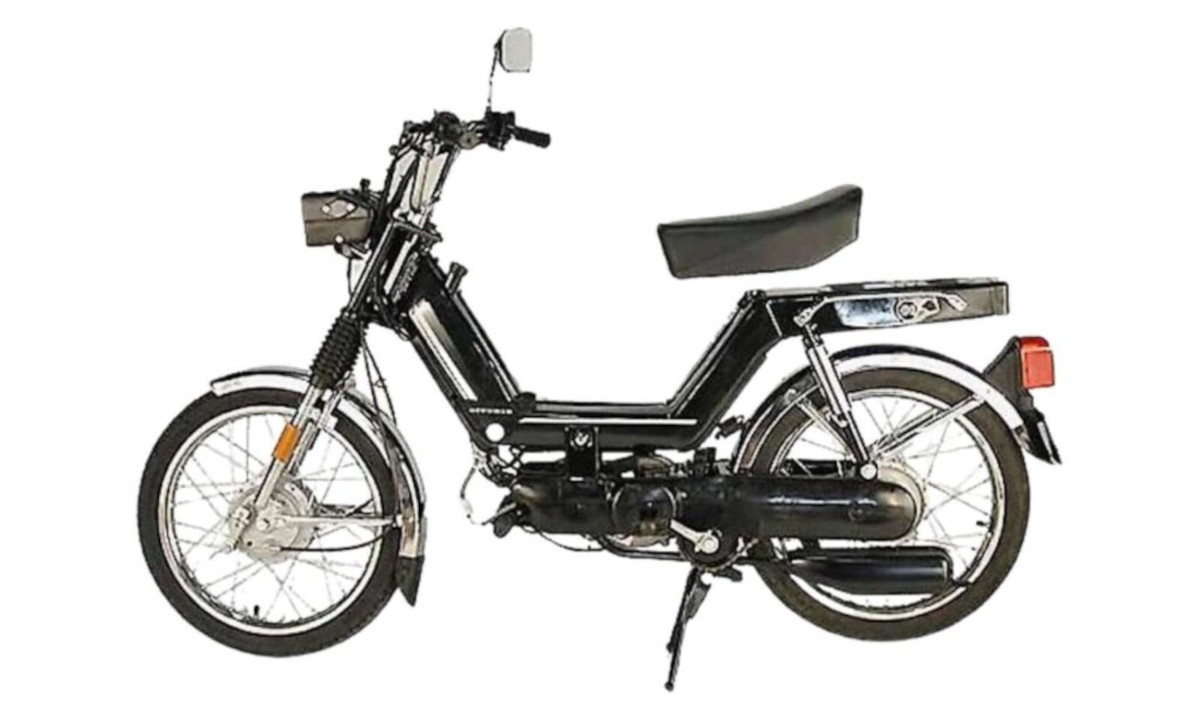Kinetic Greens, a sister company under the Kinetic Group, is developing the electric version of the Luna two-wheeler, e-Luna. It is anticipated that the e-Luna will be launched sometime this year.
The manufacturing of this electric two-wheeler is planned in India, with an assembly plant reportedly nearing completion. The assembly line is expected to have a monthly production capacity of 5000 units.
Details
Unfortunately, there is a lack of specific details available about the e-Luna. No spy shots or leaked technical specifications have surfaced on the internet.
However, while the overall design and aesthetics might resemble the older Luna model, certain modifications will be made to incorporate a more contemporary style.
The e-Luna is likely positioned at the lower end of the electric vehicle market in terms of pricing. This suggests that it could be targeted as a last-mile connectivity vehicle, catering to short-distance commuting needs.

Pricing
Given the correct pricing, a decent riding range, and reasonable charging time, the e-Luna may attract a significant customer base, particularly among app-based delivery agents.
We await further updates from Kinetic regarding the e-Luna, including its official launch date, detailed specifications, and pricing information.
Since specific details and technical specifications of the Kinetic e-Luna must be made available, it’s challenging to provide a comprehensive list of pros and cons.
However, based on the general advantages and disadvantages of electric vehicles, we can outline some potential pros and cons of the e-Luna:
Pros:
1. Environmentally friendly: As an electric vehicle, the e-Luna would produce zero tailpipe emissions, reducing air pollution and greenhouse gas emissions.
2. Cost savings: Electric vehicles typically have lower operating costs than conventional internal combustion engine vehicles, requiring less maintenance and lower fuel costs.
3. Quiet operation: Electric vehicles run much quieter than traditional vehicles, providing a more peaceful and less noisy riding experience.
4. Potential incentives: Depending on the region, there might be government incentives, tax credits, or subsidies available for electric vehicle owners, which can help reduce the initial cost of purchase.
5. Potential for lower running costs: Charging an electric vehicle can be cheaper than refuelling with gasoline or diesel, leading to potential long-term savings on fuel expenses.
Cons:
1. Limited range: Electric vehicles typically have a limited driving range compared to conventional vehicles, which can pose challenges for longer trips or insufficient charging infrastructure.
2. Charging infrastructure: The availability and accessibility of charging stations can be a concern, particularly in areas with limited charging infrastructure, which might make long-distance travel more difficult.
3. Charging time: Charging an electric vehicle generally takes longer than refuelling a conventional vehicle with gasoline. This could result in longer waiting times for charging and the need for careful trip planning.
4. Initial cost: Electric vehicles tend to have a higher upfront cost compared to traditional vehicles due to the cost of batteries and other electric drivetrain components. However, this might be mitigated by potential government incentives or subsidies.
5. Battery degradation: Over time, the performance and range of electric vehicle batteries can degrade, requiring battery replacement or reducing the vehicle’s overall lifespan. Battery degradation can also be influenced by temperature and charging patterns.
These pros and cons are speculative and based on general considerations for electric vehicles.
Conclusion
The Kinetic e-Luna is a good option for those seeking a low-cost, low-maintenance electric scooter. It is perfect for short commutes and city riding. However, consider other options if you want a scooter with a faster top speed or more features.
Source: Bikewale


































